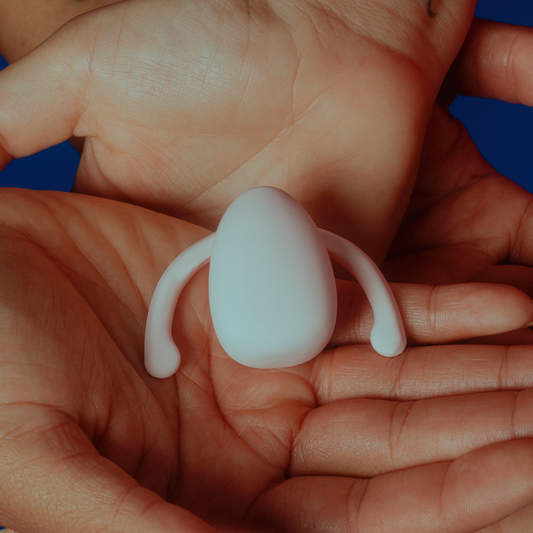When a long-term relationship comes to an end, it can feel like stepping into an uncharted territory—a place where the familiar paths of intimacy, connection, and companionship suddenly vanish. But as uncertain as this can feel, it can also be an amazing opportunity to become more intimate with yourself, and to seek a deeper understanding of your own needs and desires.
The journey of rediscovering intimacy after such an upheaval is both daunting and liberating, filled with moments of self-reflection, growth, and the opportunity to redefine one's relationship with oneself and others.
Take time to heal
The end of a long term relationship can offer a plethora of mixed emotions. It can feel heavy, sad, confusing, liberating, or lonely. And as much as it’s tempting to jump immediately into a new relationship to ease the pain of loss, that move can discount the value of using this time for introspection.
New relationships can sometimes be a band-aid; a short term solution that skips over the vast opportunity to get to know yourself. Knowing yourself is rarely a comfortable process, but an insightful one, layered with elements of vulnerability. It can offer a chance to reflect on what elements went well in your last relationship, what could have been improved, and how you’d like to move forward.
The idea of intimacy can also shift here, recognizing that it does not only exist in partnered relationships, but also in friendships, family connections, and most importantly, with yourself.
This process also isn’t linear, and emotions may rise and fall like a ride or crash into you when you least expect it. There is no expected pace for inner healing.
This is also an amazing time to tap into your support system, which could look different for everyone. If you have close friends, family or chosen family, articulate your needs as best you can. Seeking professional help can also be invaluable during this time, which could look like talking with a therapist, or pursuing body work with massage therapy or acupuncture, as grief and loss often show up in the body. Connecting with others can help to ease the loneliness and aid in the healing process.
Consider how monogamy fits into your life
If your long term relationship was monogamous, a breakup can offer a clean slate to assess whether monogamy is something you want to continue to practice. An open relationship can take many formats, from seeking multiple sexual partners to forming multiple committed relationships.
There are some considerations to an open relationship, like exploring how jealousy shows up for you, how well you can communicate and set boundaries, and how an open relationship might benefit you. Introspection is key here- only you know if this is right for you.
Explore your kinks
Explore those kinks, baby! Keeping sexual novelty in long term relationships can be challenging, so if things have gotten a little vanilla, give yourself permission to freely explore what your desires and kinks are now. This may be a moving target, as your needs and kinks may have changed, and that’s ok. Explore what turns you on, and what feels good for your body.
This can also be an excellent time to pick up some new toys, like the versatile Dip, the classic Com, or the clit-loving Aer. Experimenting with visual stimuli like porn (or audio porn!) can also accelerate the process of self-discovery. The better you know how to sexually satisfy yourself, the better you can educate a future partner on what you need.
Communicate your sexual needs
Starting over with a new partner can be a fresh start in the realm of communication. This can show up in many parts of a relationship, but communication can often be stifled in the bedroom. Maybe there’s concern around your own level of comfort with your kinks, stigma associated with what you like, or even shaming from a former partner. This can be especially true if you’ve been in a bit of a rut in your last relationship, and perhaps became accustomed to doing things in a certain way.
Once you’ve explored and investigated your own desires, be specific and clear when communicating this to a new partner. This is also an excellent chance to get clear on your boundaries. Communication is a two-way street, so this can also include actively listening to your partner’s needs and desires, and determining how to integrate both of your desires in harmony.
How do I know I’m ready for intimacy with a new partner?
Short answer- there’s no one-size-fits-all answer for this. There is no perfect algorithm that can determine readiness, but it does involve a level of self-knowledge, introspection and self-trust. The more you know yourself, the more you can move forward confidently making decisions in your own best interest. This is different from rationalizing, meaning you’re attempting to explain or justify your own behavior with logic, even if it’s not appropriate or true. There is so much value in listening to your body.
There can also be significant social pressure to be partnered, especially around birthdays and holidays, but there’s no timeline that follows the calendar for when you’ll be ready. This is by no means a perfect list, but some questions to consider:
- What are my boundaries?
- Am I aware of my own wants, needs and desires?
- What is my intuition telling me?
- How resolved do I feel about what happened with my former partner?
- Does a relationship feel right for me, or am I facing social pressure to partner up?
Ultimately, the journey of rediscovering intimacy after the end of a long-term relationship is an evolution—an evolution of the self, perceptions of relationships, and the understanding of what it truly means to be intimate. It's about embracing vulnerability, nurturing connections, and most importantly, cultivating a profound relationship with oneself.
In this journey, one not only rediscovers intimacy but also emerges stronger, more self-aware, and ready to embrace the complexities of human connections with a newfound perspective.



















































1 comment
This team of professional hackers at: HACKSPEED24@ GMAILCOM, specializes in providing reliable and efficient software hacking services to meet all your hacking needs. Whether you’re looking to keep tabs on your spouse, kids, on your home, office, or any other space, HACKSPEED24 team of experts is here to help. With this team you can trust that your security and peace of mind are their top priorities. Their user-friendly interface and advanced features make monitoring easy and convenient for everyone. Don’t wait any longer to secure your valuables and loved ones – book with them today and experience the difference for yourself. Join countless satisfied customers just as myself who have already chosen this team as their go-to hacking solution. They also specialize in recovering All lost bitcoin, lite coin, Ethereum wallets from any dubious crypto investment platform. Just send an Email to: HACKSPEED24@ GMAILCOM, they’re legit and reliable.